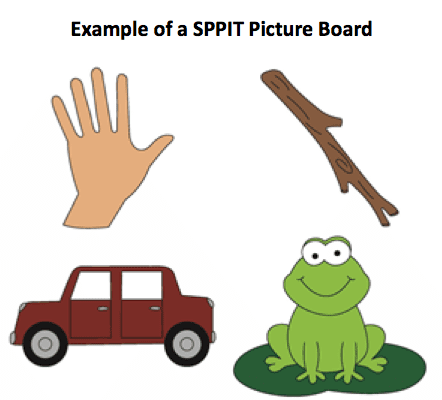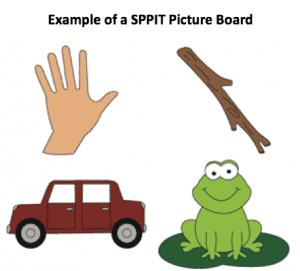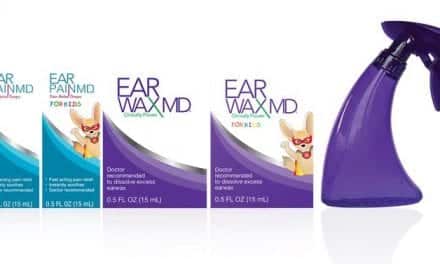The Spanish Pediatric Picture Identification Test (SPPIT)
Testing the growing population of native Spanish-speaking children seen in audiology clinics can be a challenge to the audiologist without Spanish language skills. The Spanish Pediatric Picture Identification Test (SPPIT) was developed specifically for use with Spanish- speaking children in order to assist audiology clinics without access to bilingual audiologist or interpreters, Auditec announced. Auditec, offers a variety of auditory test materials for audiologists, psychologists, speech-language pathologists, hearing professionals, and other trained medical professionals.
The SPPIT was developed in the Speech Perception Assessment Laboratory directed by Dr Lisa Lucks Mendel at the University of Memphis’ School of Communication Sciences and Disorders in collaboration with St Jude Children’s Research Hospital and Latino Memphis.
Development of the SPPIT included the production and validation of new digital recordings of the word lists created by Comstock and Martin (1984). Phase 1 of this study involved producing digital recordings of these stimuli and administering the lists to adults with normal hearing to determine list equivalency. In Phase 2, digitally illustrated pictures that represented the stimuli in the word lists were created and validated using Spanish-speaking children. In Phase 3, list equivalency was re-established, performance-intensity (PI) functions were obtained, and the final word lists were validated using a picture-pointing task with Spanish-speaking children.
Example of a SPPIT Picture Board
The same native Spanish-speaking female produced the SPPIT stimuli. The carrier phrase, “Di la palabra (Say the word),” was recorded and inserted prior to each stimulus item to introduce each target word and help signal the listener. Performance-intensity functions were obtained in an open-set manner from adults with normal hearing to establish initial equivalency of the 3-word lists. Pictorial representations for each item in the lists were then validated by asking children to verbally identify the target images in Spanish. Those images with the lowest performance were placed in a fourth list as distractors. In the final list validation, ten Spanish-speaking adults responded to the lists verbally and 35 Spanish-speaking children, aged 4 to 17, were tested using the picture-pointing task. Performance intensity functions at sensation levels from 0 dB to 40 dB in 8 dB steps were obtained establishing list equivalency for Lists 1 and 2 with List 3 have significantly higher scores.
The SPPIT picture boards are said to provide ease and accuracy of scoring for the monolingual English clinician. Instead of judging the accuracy of an oral response, the audiologist can simply judge if the appropriate word/picture was identified. In addition, the picture-pointing task is also useful for nonverbal or shy children. The test can even be used for Spanish-speaking adults with limited or no English proficiency. The test includes color picture boards and a digitally recorded CD containing the validated word lists. CDs with an optional English translation channel are also available through Auditec, Inc.
A separate recording of these stimulus items is currently being validated using a male talker with a European Spanish dialect in order to provide audiologists with additional dialectical options for their Spanish patients. Future studies will include validation of the SPPIT using 4-talker Spanish babble (Auditec, Inc, 2007).
Recommended Reading
Spanish Four Talker Noise. Auditec, Inc. https://auditec.com/2015/09/02/spanish-four-talker-noise/. Published September 2, 2015.
Comstock CL, Martin FN. A children’s Spanish word discrimination test for non-Spanish-speaking clinicians. Ear and Hearing. 1984;5 (3):166-170.
Mendel LL, Pousson M, Bass JK, Lunsford RE, McNiece C. Spanish Pediatric Speech Recognition Test. American Journal of Audiology. 2019. https://doi.org/10.1044/2019_AJA-18-0132.
Mendel LL, King MP, Bass JK, et al. Two Spanish pediatric speech recognition tests: The SPSRT and the SPPIT. Poster presented at: AAA 2018; April 18-21, 2018; Nashville, TN.
Mendel LL, Coffelt JA, Pousson M, Lane K, Carter M. Introducing the SPPIT: Spanish pediatric picture identification test. Poster presented at: AudiologyNOW!; April 5-8, 2017; Indianapolis, IN.
Mendel LL, Lane K, Carter M, Coffelt JA, Pousson M. Development of a Spanish word recognition test for Spanish-speaking children. Poster presented at: American Speech-Language-Hearing Association (ASHA) Convention; November 17-19, 2016; Philadelphia, PA.
Mendel LL, Elkins R, McNiece C, Lane K, Carter M, Taylor J. The development of speech recognition tests for Spanish-speaking children. Poster presented at: American Speech-Language-Hearing Association (ASHA) Convention; November 14-16, 2013; Chicago, IL.
The Spanish Pediatric Speech Recognition Threshold (SPSRT) Test
The Spanish Pediatric Speech Recognition Threshold (SPSRT) Test was developed specifically for use with Spanish-speaking children in order to assist audiology clinics without access to bilingual audiologist or interpreters.
The SPSRT was also developed in the Speech Perception Assessment Laboratory directed by Dr Mendel at the University of Memphis’ School of Communication Sciences and Disorders in collaboration with St Jude Children’s Research Hospital and Latino Memphis.
Several steps were followed in the development of the SPSRT including stimulus selection, degree of familiarity, pictorial recognition, and audio recording. With regard to stimulus selection, several considerations were made for the SPSRT picture board. Because the Spanish language has very few spondaic words, bisyllabic and trochaic words were used instead. Trochaic stress is the most frequently used stress pattern in Spanish, which consists of a stressed syllable followed by an unstressed syllable. (Gaeta & John, 2015; Martin & Hart, 1978). Another consideration was the need for each stimulus item to be presented pictorially and be easily recognized by children. In addition, the type of pictorial representation had to be determined as to whether the pictures would be actual photographs or illustrated pictures. Further, to avoid providing extra cues to the listener by using gender-identifying articles such as ‘el’ or ‘la,’ the stimuli selected could not be gender specific.
One hundred words matching the above criteria were chosen from A Frequency Dictionary of Spanish: Core Vocabulary for Learners (Davies, 2006). Familiarity ratings for the stimulus selections were obtained from Spanish-speaking adults followed by familiarity selections with pictorial representation obtained from Spanish-speaking children aged 3 to 11. This provided the final picture board, which consists of a 4-row x 3-column, 12-item grid.
SPSRT Picture Board
The final step was to produce digital recordings of the final stimulus list using a native Spanish-speaking female from Central America and then validate these recordings using the previously selected pictorial representations on a picture board. Twenty-four Spanish-speaking children with normal hearing were tested to obtain validation results for the final digital recordings.
PTA and SPSRT were highly correlated (r = 0.75) even though the PTAs ranged from -3 to 31 dB and SPSRTs ranged from -0 to 20 dB. The average PTA was 12 dB, the average SPSRT was 2 dB, and the mean difference between PTA and SRT was 10 dB across all subjects. It is anticipated that audiologists can expect to have PTA/SRT agreement with this test within 2 to 12 dB based on the consistency of the results obtained here and their agreement with existing literature for other SRT tests.
The SPSRT picture board is said to provide ease and accuracy of scoring for the monolingual English clinician. Instead of judging the accuracy of an oral response, the audiologist can simply judge if the appropriate word/picture was identified. In addition, the picture-pointing task is also useful for nonverbal or shy children. This test can even be used for Spanish speaking adults with limited or no English proficiency. The test includes a color picture board and a digitally recorded CD containing the validated word lists. CDs with an optional English translation channel are also available through Auditec Inc.
A separate recording of these stimulus items is currently being validated using a male talker with a European Spanish dialect in order to provide audiologists with additional dialectical options for their Spanish patients.
Recommended Reading
Davies M, ed. A Frequency Dictionary of Spanish: Core Vocabulary for Learners. Abingdon, UK: Routledge Press;2006.
Gaeta L, John AB. Considerations in speech recognition testing of bilingual and Spanish-speaking patients, Part II: Young children. Journal of Educational, Pediatric, and (Re) Habilitative Audiology. 2015;1:1-11.
Martin FN, Hart DB. Measurement of speech thresholds of Spanish-speaking children by non-Spanish speaking audiologists. Journal of Speech and Hearing Disorders. 1978;43(2):255–262.
Mendel LL, Pousson M, Bass JK, Lunsford RE, McNiece C. Spanish Pediatric Speech Recognition Test. American Journal of Audiology. 2019. https://doi.org/10.1044/2019_AJA-18-0132.
Mendel LL, King MP, Bass JK, et al. Two Spanish pediatric speech recognition tests: The SPSRT and the SPPIT. Poster presented at: AAA 2018; April 18-21, 2018; Nashville, TN.
Mendel LL, Coffelt JA, Pousson M, Lane K, Carter M. Introducing the SPPIT: Spanish pediatric picture identification test. Poster presented at: AudiologyNOW!; April 5-8, 2017; Indianapolis, IN.
Mendel LL, Lane K, Carter M, Coffelt JA, Pousson M. Development of a Spanish word recognition test for Spanish-speaking children. Poster presented at: American Speech-Language-Hearing Association (ASHA) Convention; November 17-19, 2016; Philadelphia, PA.
Mendel LL, Elkins R, McNiece C, Lane K, Carter M, Taylor J. The development of speech recognition tests for Spanish-speaking children. Poster presented at: American Speech-Language-Hearing Association (ASHA) Convention; November 14-16, 2013; Chicago, IL.
Source: Auditec, Inc
Images: Auditec, Inc







